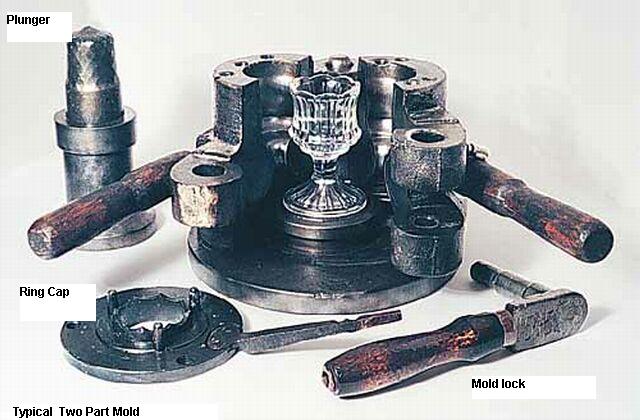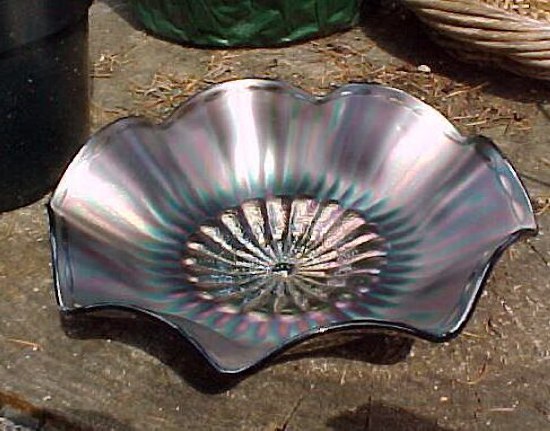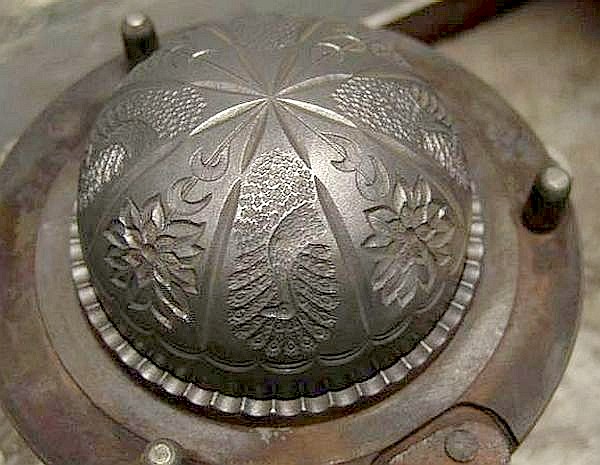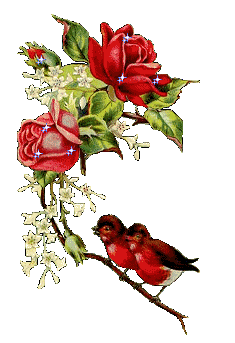Carnival Glass 101 | home Quick Reference to Carnival Glass Patterns
Introduction · How Carnival Was Made · Glass Process · Early Makers · Finding Carnival · Colors · Carnival Glass Edges · Buying Carnival · Carnival Terms · Glass Terms · Reference Books · What is This? · FAQ · Sharing Carnival · Links · Closing
How Carnival Was Made
How Carnival Was Made
Much of the mystery surrounding the ‘old’ Carnival Glass can be overcome by learning some of the standard characteristics associated with it.
Perhaps we should begin by saying that Silica Sand is the basis for any Glass. Cullet and Soda Ash are added. When the appropriate amount is heated in a furnace, a molten state is produced. Various color can be added, creating the base glass, if other than clear is desired. ALL Marigold Carnival Glass has clear glass for a base.
First of all, the appearance of the Carnival Glass manufactured between 1907-mid 1920’s can be identified more easily by realizing the very name signifies the coating or overspray which appears to be as oil spreading over water. This was achieved by mixing various metallic elements, (some of which are not permitted by today's manufacturers). It is the overspray (liquid metallic salts) which creates the carnival appearance. Glass MUST have the iridescent overspray of metallic salts in order to be considered carnival glass. If the glass is not iridized, it is NOT Carnival.
The various carnival patterns were chiseled into cast iron molds, in reverse of what appears on the Glass, so these artisans were exercising great skill in their performance.

The above is a typical two part mold (correctly spelled mould but if we spelled it that way you would say, "What the heck are they talking about?").
The press molds are cast metal devices consisting of the top plunger, the ring cap, mold lock and base (bottom section of the mold). The bottom can be formed using 2, 3, 4 or even 5 section moveable sides that typically cause seam lines in the finished product. The wooden handles are brought together and closed. The mold lock is put in place to insure the mold stays closed. The ring cap is placed on top. The hot molten glass is dropped from a gathering rod. The rod is rotated in the hot glass until it is completely covered with enough glass to fill the mold. The rod is held above the mold and a second craftsman uses metal sheers to cut the right amount of glass as it drops into the mold. The plunger is place in the molten glass. Hundreds of pounds of pressure push on the plunger (using a hydraulic glass press), to insure that the glass completely fills the mold.
When the Glass is removed from the mold, it is taken to the ‘glory hole” of the furnace, reheated, and then shaped with apple wood paddles and other tools of the trade. This is how the beautiful ruffles, delightful whimseys and all the other edge shapes were formed. After the shaping, the iridescence is sprayed on the glass. From there it goes to the lehr (an enclosed conveyor belt that allows the hot glass to slowly reach room temperature over a 24 hour period) for tempering. The glass must be cooled slowly to prevent stresses. Once cooled, you have your finished product. A beautiful piece of carnival glass was born.

Stippled Mum - One of the very early Northwood Patterns.
More Mould Pictures

Fenton Peacock - Dahlia 7 in. Bowl Mould Plunger

Exterior mould for 6 in. Imperial OPEN ROSE Bowl.

Praise the Lord for all things
back to Carnival Glass 101
Should you care to contact the Frys, their email address is:
Search Carnival Glass 101
Our other sites you may enjoy:
Everything you EVER wanted to know about Indiana Glass
Great Reference for Newer Carnival Glass.
Complete Glassware Catalogs Available to Download
Questions? Comments? Suggestions? Broken Links? Corrections?
Your Friendly Webmaster is here to help!
